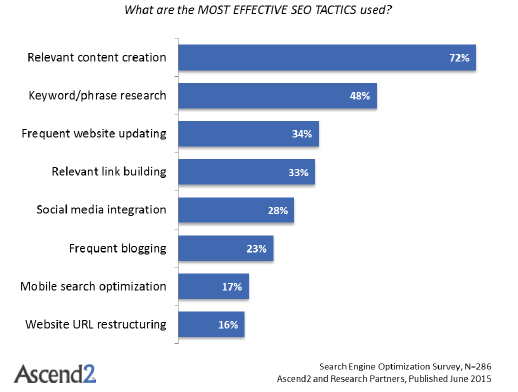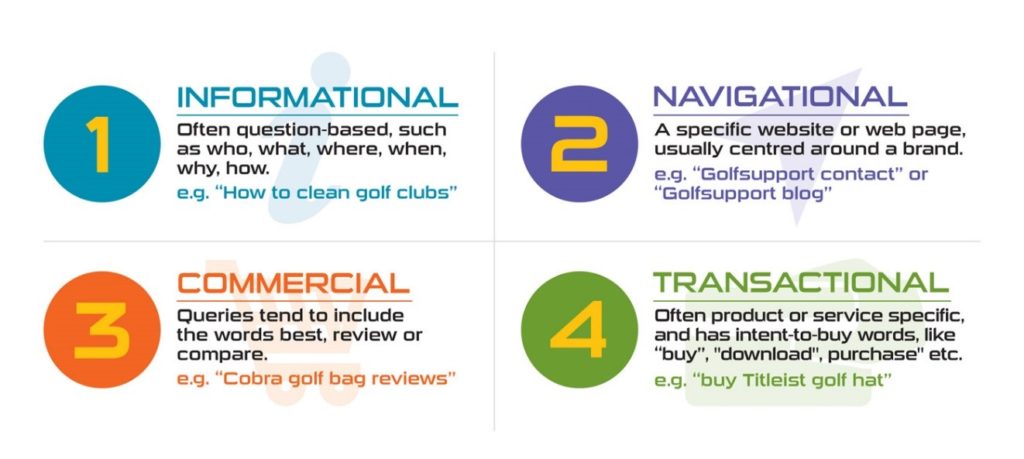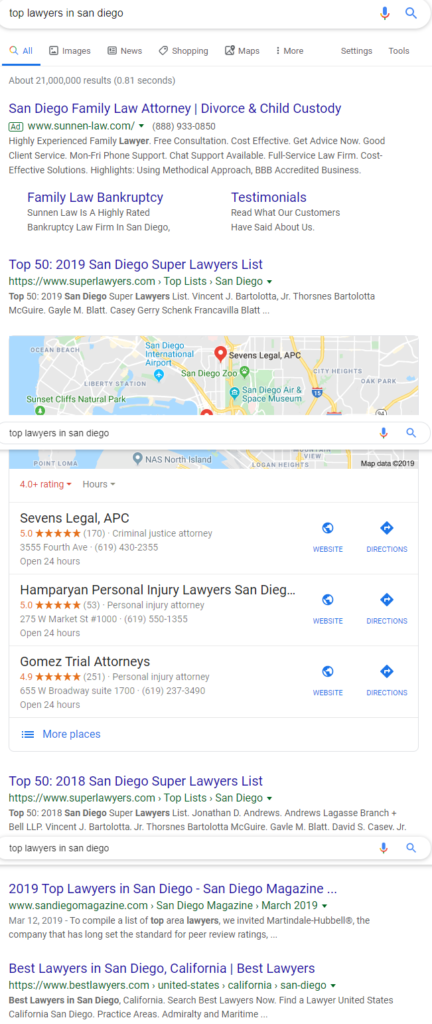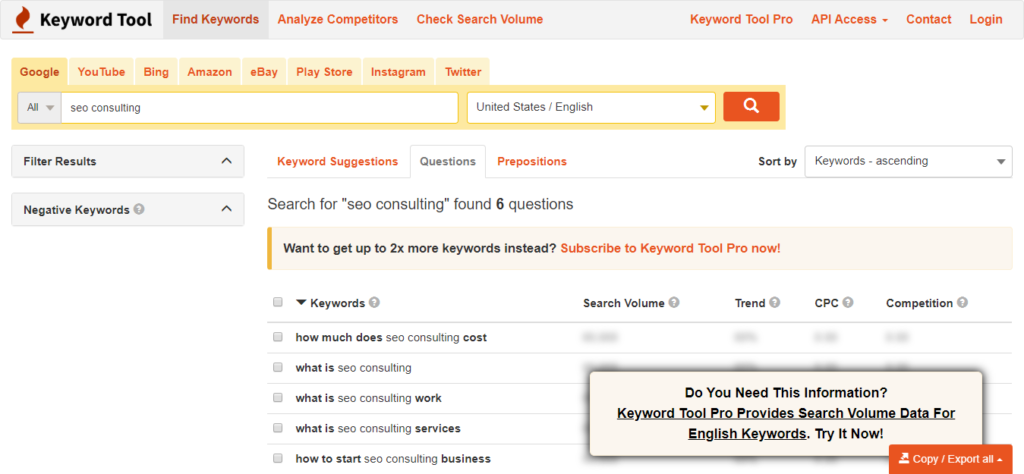SEO Guides, Tips & More!
Learn from Our Experience
Ultimate Guide to SEO for CPAs (Part II)
In Part 1 of our Ultimate Guide to SEO for Accountants, we covered how SEO is used for accounting firms, how they benefit from strategic SEO, free tools to help accounting marketers tap into a fuller range of SEO applications and metrics, and factors affecting SEO performance. We talked about the technical considerations that can impact a campaign, such as:
- How well the site is optimized for mobile,
- Website data (schema markup and robots.txt file),
- Page loading speed, and
- User experience.
Other than these technical issues, the quality of content is so important. Even the best on-page optimization or PPC campaigns will be limited if the content doesn’t live up to users’ expectations. There’s more to it than informative, relevant blog posts or webpages. How content is created matters, too.
Part 2 of our Ultimate Guide to SEO for CPAs will cover:
- Content’s Role in SEO
- Types of Content
- Conducting Keyword Research
- More Than Keywords: User Intent and Longtail Phrases
Content’s Role in SEO
Content marketing, the practice of creating and sharing online material, is part of any good accounting firm’s online strategy. It’s more than blogs or social media; effective content marketing involves many different types of media and will be tailored to meet clients and prospects at varying points in the sales process.
Effective content is critical for successful SEO campaigns. It’s what forms the basis for prospect research, and lets clients know they’re in good hands. It promotes the firm and its employees and gives the firm a valuable way to differentiate itself in a sea of many, many other similar faces.
Developing content for SEO requires a bit of strategy and trial and error, but when done correctly, it can propel a firm to the top of Google search rankings and prospect minds. It’s still the most effective SEO tactic, even ahead of keyword research (image source).

Types of Content
Most accounting firms have a blog in 2019, but there are so many other ways to create content that’s engaging and optimized for SEO. Keep in mind that great content needs to be connected to the sales process. Have a variety of content types to speak to prospects at various points in the sales process: shorter blog posts and social media for the top of the funnel, long-form posts and video for the middle of the funnel, and premium content like industry reports or specialty whitepapers for the bottom of the funnel, as examples.
Here are a few different types of content that should be part of a 2020 marketing plan, and how to use them. Note that isn’t meant to be an exhaustive list.
Long-Form Content of about 1,500 to 2,000 words or more has been proven to get better engagement than shorter written pieces. It helps to increase page rank, web traffic, time on site, and reputation as a subject matter expert. Other reasons why accounting firms should be adding quality long-form content into the mix include:
- Easier to insert longtail keywords and phrases
- Google prefers high-quality, in-depth content to shorter, low-quality content
- Part of an organic backlinking strategy
- Higher social media engagement
- Higher conversion rates for premium long-form content
Consider that the average word count of content on page one Google SERP results was 1,890 words.
For SEO, long-form content works well for the middle or bottom of the sales funnel.
Short-form content is characterized as fewer than 1,200 words, but realistically it looks like 200-400 word blog posts, daily tips, social media posts, or expert commentary. It works well for readers who either already know your firm well or who want a quick overview of a timely topic. Shorter posts also tend to be more mobile-friendly, which by itself is a reason to continue using it. Short-form content by itself isn’t great for SEO, but as part of an overall marketing strategy, it shouldn’t be ignored, either.
Videos get some of the best engagement compared to other forms of content marketing. They make up most of the content available online today, and for good reasons. Attention spans continue to decrease, the way in which we prefer to get information is changing, not to mention the visual and audio storytelling elements create powerful connections with viewers. Video’s role in SEO and lead generation is powerful, as evidenced in the graphic below.

Accounting firms can use videos in several ways. Here are just a few ideas that also connect well with SEO campaigns.
- Interview the firm’s partners and employees, more specifically for visual bios; accounting, advisory, or tax tips; firm culture; firm events; and/or discussions on timely news or events.
- Blog videos, a great way to repurpose existing content.
- Client interviews and/or impact stories.
- Q&A from clients or associations/industry groups.
- Webinars or recordings of live continuing education presentations.
Optimizing videos for SEO can be done in a few ways, starting with the title and description. Add captions and a transcript to pick up even more traffic. Although videos that are about two minutes or less tend to get the most engagement, it depends on the message.
Withum has always done a great job of displaying their firm through video. Check out their YouTube channel for some inspiration. Here’s a shot of their flashmob in New York (who says accountants don’t know how to have fun?).
Being aware of Google’s SERP features and optimizing content for them is another SEO content strategy. Read more about the local pack, featured snippets, videos, and related questions and how to rank for them in our post from last year.
Conducting Keyword Research
Looking for and finding keywords to use in SEO and content marketing doesn’t have to be difficult or overly time-consuming. We wrote in a previous blog post that the difference between a website that gets a ton of high-quality traffic and one that doesn’t get much at all is in the keyword strategy. The type of keywords we’re most familiar with are usually more generic, shortail keywords like Denver CPA or Tax Cuts and Jobs Act.
These are broad terms that get a lot of search volume but usually come with high competition and low user intent (more on user intent in the next section). The competition factor is important, as well as how firm competitors are ranking for the same terms. These keywords are still important but don’t spend a lot of time incorporating them into high-value content.
Keyword research can be intimating because there are so many different ways to approach it. We recommend identifying:
- Terms that the firm’s website currently ranks on,
- Terms that the firm’s competitors’ sites rank on,
- Seed keywords (base or foundational keywords in SEO whose meaning is not changed when additional descriptive text is added), and
- Question-based keywords the firm currently ranks for.
Once these terms are identified, then it’s time to evaluate keyword potential. More on how to go about conducting keyword research can be found in our post from March 2019. Definitely navigate over to that page and have a read to go into a deeper dive on each of these processes.
For more useful keyword research tools, check out this blog post from January 2019 for six different keyword research tools.
More Than Keywords: User Intent and Longtail Keywords
User intent refers to what the person wants out of the search that he or she is conducting. It’s based on the concept that anyone who performs a search is looking for something; maybe it’s information, product comparisons, or to register for an event. Knowing what user intent is and how to incorporate these types of keywords into the firm’s content helps to ensure that the right people find the right kind of content, at the right time.
The four types of user intent are:
- Transactional
- Purpose: to buy something or complete an action, like downloading content or signing up for an event
- Point in sales funnel: bottom; might not be ready to buy but willing to engage
- Informational
- Purpose: to find more information about a topic, like tax changes or new court rulings
- Point in sales funnel: top to middle; may change based on search results
- Navigational
- Purpose: to find a specific site
- Point in sales funnel: top; may change to Informational Intent depending on search results
- Commercial
- Purpose: To research specific services/products the users knows he wants to buy before making a purchase; similar to Transactional.
- Point in Sales Funnel: bottom; ready to buy

Every piece of content online falls into one or more of these categories. Content that’s optimized for user intent will answer reader questions, rank higher in search results, and increase conversions. Look for these keywords to give away user intent:
- Transactional keywords: buy, download, purchase
- Informational: “how to” “where to find”
- Navigational: keywords include the site name and any other combination of phrases, like partner names
- Commercial: best, comparison of, review along with specific brand or firm names
Developing content with user intent in mind can mean incorporating these keywords and variations of them into posts and webpages, as well as including links to other places on the site, like service pages, partner bios, contact forms, and premium content downloads.
For example, if Google Analytics reveals that people are coming to the firm’s site with keywords and phrases like “Do I need a CPA for my small business?”, the intent of that search is informational and a checklist or infographic could be developed to help prospects figure out if they really do need a CPA to help manage their small business finances. The user intent is considered low but it’s a good opportunity for brand awareness.
In another example, a user might type in “top lawyers in San Diego.” This is considered a high intent Commercial keyword. This person does need a lawyer and she wants to see who the best ones are. Notice the search results? Only the top spot is an ad; the rest are part of curated lists on third party sites like Super Lawyers, San Diego Magazine, and Best Lawyers. The other results that show up in the Google Maps preview are reserved for the firms with the most and highest Google ratings. This demonstrates that a solid SEO strategy is about more than the words on the pages – it’s the whole online experience.

Longtail Keywords
Search queries that are more than three or four words long are considered to be longtail keywords. They are very specific and tend to represent prospects who are in the middle or bottom of the sales funnel. They have higher conversion rates than shorter, more generic keywords as the person already knows what he’s searching for. Search volume is lower for these keywords, but competition is lower, too. The people behind longtail keywords will probably be part of a niche audience or industry vertical for the firm, and as such, the firm has already created specific content that speaks to the needs of this particular group.

Long-tail keywords are easier to use in long-form content that is 1,500 words or more, so these deep-dive articles are excellent not just for SEO but also for converting high-value prospects. To do long-tail keywords well, firms must understand their buyer personas. This example from Neil Patel is excellent – they give their persona a name, title, job details, online characteristics – even a face! This makes that persona “human”, and it’s much easier to write to Brian, Senior Software Engineer than it is to just write to “the client.”

To find out which longtail keywords to use in the firm’s content, go to Google Keyword Planner. Type in the main, generic search term, click on ‘Get Ideas, and on the next page, click on ‘Keywords’ to see the whole list of suggestions. Look for the keywords with at least four words in the phrase. Remember to think about user intent, too. Another option for Keyword Planner is to start by typing in the firm’s website to get keyword ideas from there.
To demonstrate, we did a search for captive insurance accounting, a very specific niche service offering. Accounting firms that want to develop content for this niche should be incorporating the phrases with low and medium competition into their content for buyers in this niche.

Other than Google Keyword Planner, check out KeywordTool. It’s free with paid options and also provides data on search volume, trends, cost per click, and competition across Google, Instagram, Bing, and other platforms. Plus, it’ll give suggestions for question queries, which we know are informational user intent.

Going back to the basics of effective content marketing, asking initial questions like “what is the purpose of this post”, “why would someone click on it” and “what do readers expect to learn” will help marketers identify the intent and find relevant keywords to use to create better quality online content for SEO.
In the third installment of our Ultimate Guide to SEO for Accountants, we’re going to cover how to implement off-page SEO strategies like backlinking, social media, and the role of Google My Business. Stay tuned!
As you can see, a firm’s content can really help to up the SEO game. Even without paid ads, targeting the right keywords and user segments can increase page rank and improve conversions organically. What has been your experience with creating and optimizing content for SEO? Tell us in the comments.

